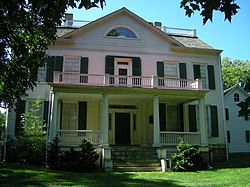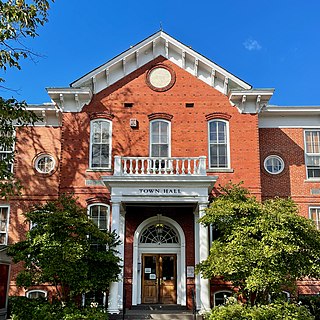
Cranbury is a township in southern Middlesex County, within the U.S. state of New Jersey. Located within the heart of the Raritan Valley region in Central Jersey, Cranbury is roughly equidistant between New York City and Philadelphia, and is an outer-ring suburb of New York City within the New York metropolitan area.

New Brunswick is a city in and the seat of government of Middlesex County, in the U.S. state of New Jersey. A regional commercial hub for central New Jersey, the city is both a college town and a commuter town for residents commuting to New York City within the New York metropolitan area. New Brunswick is on the Northeast Corridor rail line, 27 miles (43 km) southwest of Manhattan. The city is located on the southern banks of the Raritan River in the heart of the Raritan Valley region.

John Bubenheim Bayard was a merchant, soldier, and statesman from Philadelphia, Pennsylvania. He achieved the rank of colonel while serving with the Continental Army, and was a delegate for Pennsylvania to the Congress of the Confederation in 1785 and 1786. Later he was elected as mayor of New Brunswick, New Jersey.

The New Jersey General Assembly is the lower house of the New Jersey Legislature.
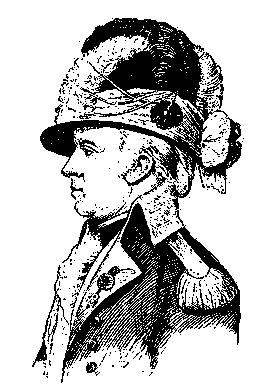
Anthony Walton White was a brigadier general in the Continental Army during the American Revolutionary War who had previously served as an aide-de-camp to General George Washington.

John Henry Livingston was an American Dutch Reformed minister and member of the Livingston family, who served as the fourth President of Queen's College, from 1810 until his death in 1825.

Joseph Reed was a Founding Father of the United States and a lawyer, military officer, and statesman of the American Revolutionary Era who lived the majority of his life in Pennsylvania. He served as a delegate to the Continental Congress and, while in Congress, signed the Articles of Confederation. He also served as President of Pennsylvania's Supreme Executive Council, during the American Revolutionary War, a position analogous to the modern office of Governor.
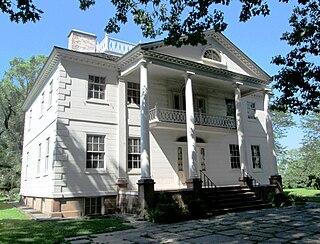
The Morris–Jumel Mansion or Morris House is an 18th-century Federal style museum home in upper Manhattan, New York City. It was built in 1765 by Roger Morris, a British military officer, and served as a headquarters for both sides in the American Revolution.

Raritan Landing is a historical unincorporated community located within Piscataway Township in Middlesex County, in the U.S. state of New Jersey, which was once an inland port, the farthest upstream point ocean-going ships could reach along the Raritan River, across from New Brunswick. Begun in the early 18th century it remained vital until the mid 19th century, when most of the port was abandoned.

The Henry Guest House is in New Brunswick, Middlesex County, New Jersey, at Livingston Avenue and Morris Street. It was originally located on New Street between Livingston Avenue and George Street. The Georgian stone farmhouse was built in 1760 by Henry Guest. He was a New Brunswick alderman and an associate of John Adams and author Thomas Paine. It was added to the National Register of Historic Places on May 24, 1976.
Joseph Warren Scott Colonel in U.S. Army who lived in New Brunswick, New Jersey.

The Ford Mansion, also known as Washington's Headquarters, is a classic 18th-century American home located at 30 Washington Place in Morristown, New Jersey that served as General George Washington's headquarters from December 1779 to June 1780 during the American Revolutionary War.

Old Queens is the oldest extant building at Rutgers University and is the symbolic heart of the university's campus in New Brunswick in Middlesex County, New Jersey in the United States. Rutgers, the eighth-oldest college in the United States, was founded in 1766 during the American colonial period as Queen's College. Queen's College was named for Charlotte of Mecklenburg-Strelitz, the daughter of a German duke who became the queen consort of British king George III. Old Queens is located on a six-acre hilltop city block bounded by Somerset Street, Hamilton Street, College Avenue and George Street that was previously an apple orchard. Donated to the college in 1807 by James Parker, Jr., this city block become known the Queen's Campus and is the historic core of the university. Because of this, by metonymy, the name "Old Queens" came to be used as a reference to Rutgers College and is often invoked as an allusive reference to the university or to its administration.
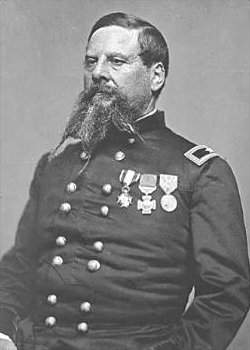
Joseph Warren Revere was a career United States Navy and Army officer. He was the grandson of American revolutionary figure Paul Revere.
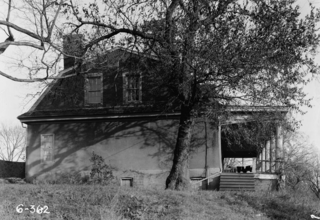
Ross Hall was a historic colonial farmhouse located on River Road in Piscataway, New Jersey. It was built c. 1739 by Edward Antill and is also known as the Edward Antill House. In 1768, it was purchased by its namesake, Dr. Alexander Ross.

Wood Lawn is a historic mansion located off Ryders Lane on the Douglass Campus of Rutgers University in the city of New Brunswick in Middlesex County, New Jersey. The house was added to the National Register of Historic Places on March 8, 1978, for its significance in architecture and education. It is currently used by the Eagleton Institute of Politics.
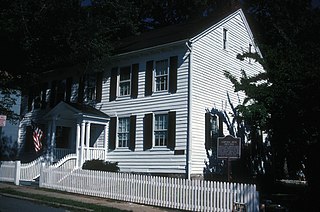
The Dr. Jabez Campfield House, also known as the Schuyler Hamilton House, is a historic, two-story, braced timber-frame colonial Georgian-style house and museum located at 5 Olyphant Place, Morristown, New Jersey.

The Van Horne House is a historic building at 941 East Main Street near Bound Brook in Bridgewater Township, Somerset County, New Jersey. The house was built c. 1750 and also known as Phil's Hill, after its owner, Philip Van Horne. It served as the headquarters for American General Benjamin Lincoln in 1777, during the American Revolutionary War, in particular the Battle of Bound Brook. Later, it served as the headquarters for American General William Alexander, Lord Stirling during the second Middlebrook encampment (1778–79). The house, on the early-18th-century Old York Road that connected Philadelphia to New York City, was a New Jersey landmark during the war. Since 2002, the Heritage Trail Association has used the house as its headquarters, including an exhibit space. It was added to the National Register of Historic Places on March 8, 2002, for its locally significant Colonial Revival architecture from 1937 to 1944.

The James Bishop House, known as the Bishop House, is a historic building on the College Avenue campus of Rutgers University in New Brunswick, New Jersey. Bishop House was built in 1852 for James Bishop, a prominent businessman and politician from New Brunswick in the latter half of 19th century. Located off of and facing College Avenue, the Bishop House is an example of an Italianate, or "Italian Villa" style mansion, popular from the 1850s to late 1870s in New Brunswick. Due to the building's significant associations with architecture, education, industry, politics and religion, it was added to the National Register of Historic Places on July 12, 1976.

John Neilson commanded the New Jersey militia in the northern part of the state during the American Revolution, served in the New Jersey legislature during and after the Revolution, and was one of the earliest trustees of Rutgers University. He is also notable for one of the earliest public readings of the Declaration of Independence, which was recently immortalized in a statue located at Monument Square Park in New Brunswick.
